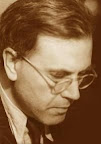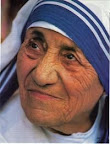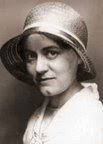 St. John Damascene, priest and doctor
St. John Damascene, priest and doctor (Dec 4)
St. John Damascene (b. 676) is considered the last of the Church Fathers, a priest, monk, scholar, and he heavily influenced the last (Seventh) Ecumenical Council recognized by all Christians, the Second Council of Nicaea (787). That council was convened to settle a great controversy and threat that had arisen in the East.
The controversy was regarding the use of sacred images (icons, but also statues and other depictions) in worship. The Jews had generally resisted such things holding that one could not depict the Invisible and Living God - no image could capture his essence, and any attempt at an image of God was merely an idol. Christians had generally always tolerated images as a matter of course.
Now Arabic raiders and hordes fueled pressed in against Christendom. They were fueled by passionate conviction in their new religion - Islam. It had only two essential tenants - that God is One, and the Mohammed is His prophet. Yet, part and parcel with those convictions was a third - depicting God was to be forbidden. Everywhere the Muslim Arabs struck, they conquered: Christian Palestine, Christian Egypt, Christian North Africa, Christian Spain, Christian Syria, Christian Persia all fell to the Arabs by the mid-700s. Many Christians became suspicious that they had been mistaken to allow the use of icons. They became fearful that God was punishing Christianity for heresy, heresies that may have even spread by the use of icons. They pointed out that Islam - so crystal clear and simple - forbad icons. The Jews forbad icons. Why should Christianity permit them?
It was in this turmoil that John grew up, as his native Syria was being overrun and taken over by the Arabic hordes. The Muslim Arabs had a modicum of respect for Christianity and Judaism, and what wasn't destroyed in initial conquests and sackings was generally left alone - including the interiors of churches and homes. So it was the Christians continued to have their icons. But in fear was rife in Constantinople, the capital of the Christian East, where the remainder of the Eastern Roman Empire still held on by a fingernail. Several times the Muslim Arabs struck and were repelled, but a seige mentality of fear settled upon that great city.
It was then, in 726, that Emperor Leo the Isaurian of Constantinople began his war against icons. He began passing laws to forbid their use in worship, and even to have them removed from public places. The Christian Patriarch of the city objected, and the emperor responded by ordering an ancient image of the Mother of God, hanging in the cathedral, to be taken down and smashed in the town square. He and his followers became know as the Icon-Smashers (iconoclasts).
At the time, John Damascene was the chief councillor of Damascus and served on the court of the Muslim Caliph who ruled that city and much of the Islamic world of the day. John was a Christian laymen serving the Muslim ruler of his city because he had a very important skill necessary for civil administration and lacking among the Arabs of the day - John could read. Not only that, but John had received the very best classical education available in his time - he read and wrote Greek, Latin, Syrian, studied philosophy, the natural sciences, theology, history, and music. He was a diligent worker, and served the Caliph well, helping to protect Christians from unnecessary difficulties.
While serving on the court of an icon-hating Muslim, John began to write letters to the icon-smashing Emperor, and to the Christian Patriarch helpless to resist the smashing. John, though far away, was anything but helpless. His letters were a brilliant defense of icons. He argued that in the Person of Jesus Christ, God has fully revealed Himself, and thus removed the danger of idolatry formerly attached to images. He quoted scripture, "He is the image of the invisible God," (Col 1:15). "Since God had begun to use images, mightn't we?" John asked. Before our senses could not take in God. Now, because of the Incarnation of the Word of God, the Enfleshment of God, our lowly flesh could take in God - we can eat His Body and drink His Blood. When he walked among us, we could shake His Hand and see His Face. To extend those experiences to later generations by means of images is surely not contradicting God's generous gift of Himself to us. John Damascene argued that denying the use of images was to deny the Incarnation of the Son of God.
The Emperor was embittered by John's scholarly resistance. He ordered that within the Empire, John be refered to only as
The Bastard. But he went further. The Emperor had forged in handwriting very much like John's a letter offering to betray the city of Damascus to the Emperor. He then sent the letter to the Caliph. The Caliph had John's hand lopped off for writing

the note, and dismissed John from his court. This sentence was lightened, compared to how most "traitors" were treated, because of the Caliph's great love and esteem of John for his virtue. When John's hand was miraculously restored, the Caliph offered John his old job back.
Understandably, John was hesistant, and decided to seek ordination rather that returning to the court of the Caliph. The Bishop of Damascus ordained him a priest. He continued his defense of icons, and wrote several beautiful sermons about the Assumption of the Blessed Virgin Mary. He made an encyclopedic compilation of all the philosophy of his day called The Fount of Wisdom. The Arabic philosophers who would later influence St. Thomas Aquinas and the Scholastics relied heavily on this book. His writings, and perhaps he personally, greatly influenced the Second Council of Ephesus, at which his doctrine of icons won out. He died sometime before or during the council (787), living to be perhaps as old as 111 (!), but exactly when is unclear.
Notably, as the Protestant Reformation (starting 1517) took its Calvinist turn (in the 1540s), Protestants began removing and destroying sacred images from their homes and from places of worship. While there isn't any argument made at the time connecting this new iconoclastic movement to Islam, one has to wonder. That was the same time period in which Muslim finally smashed through Constantinople and began overrunning Eastern Europe. By the time of Calvin, the Muslims were well on their way toward Vienna and Germany. Perhaps Protestants feared, like the Iconoclast Heretics of the ancient past, that the Muslim's success was due to their rejection of icons.
In our own day, we are grateful to see a renewed interest in traditional parts of Christian worship. The use of incense, consecration bells, icons, rosaries, statuary, and more in our liturgy and churches had shown a tremendous decline since the mid-1900s. Many of those responsible for removing and even smashing beautiful marble altars, replacing them wooden tables, throwing beautiful Stations of the Cross into dumpsters, and replacing them with abstractions entirely unrecognizable as artistry, have done so in the name of "updating" or "modernizing." That is, they were eager to aid and abet the great enemy of our time - the opinion of the "rest of the world," also known as secularism. For a generation or two, Catholics starting trying to fit in with their Protestant and secular neighbors who seemed so successful and powerful, just as Christians in St. John Damascene's day were so worried about their Muslim neighbor's plans. In the last decade or two, thanks be to God, we have seen a dramatic reversal in this trend. Can we doubt for a second that St. John Damascene has been pleading our case in the Heavenly Courts?
St. John Damascene, pray for us.








































